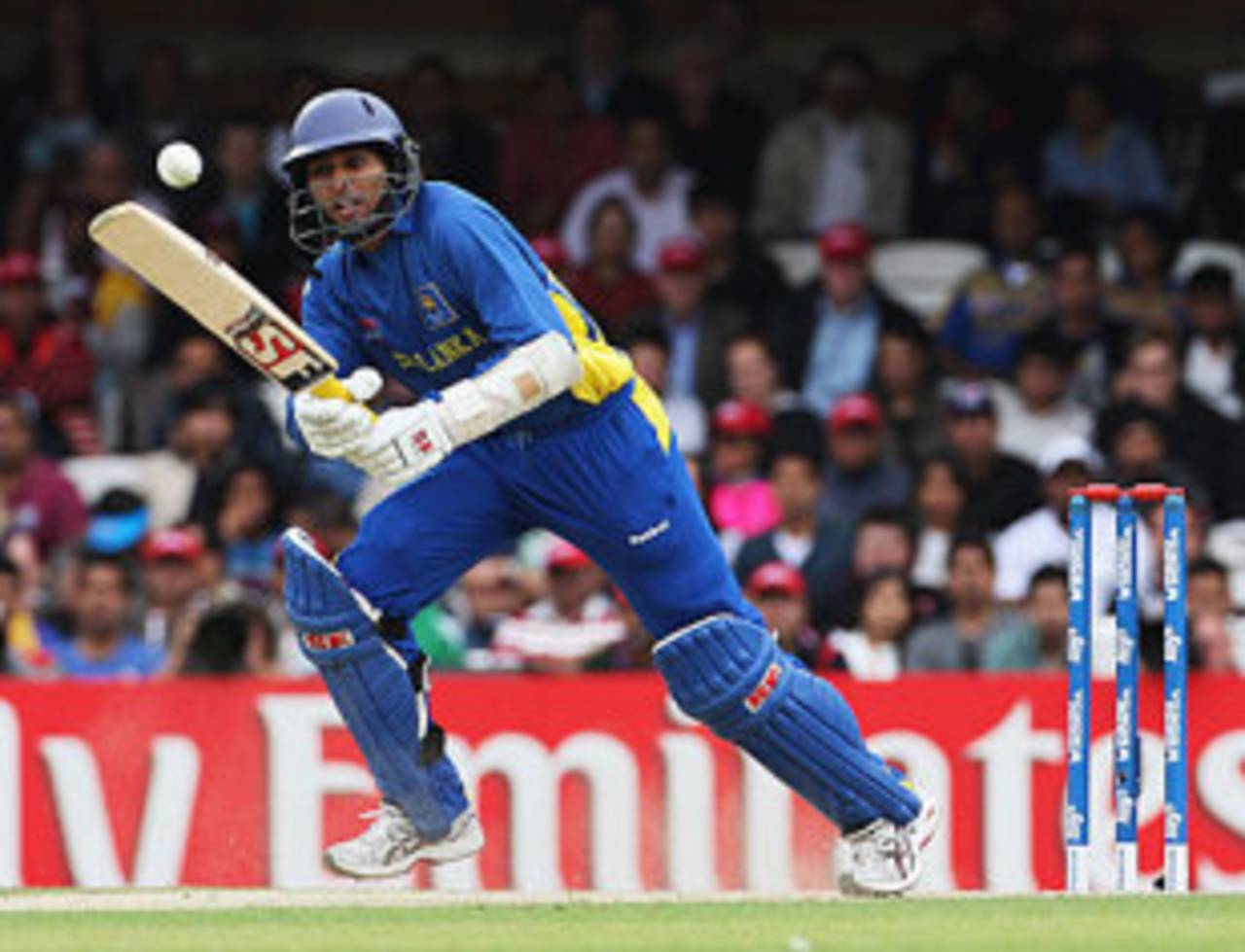Chris Gayle won one battle with
Tillakaratne Dilshan on Friday evening. By a whisker, he became the batsman to have scored the
highest percentage of his team's total in a Twenty20 match. But that's also a damning statistic for West Indies: Gayle stood utterly and hopelessly alone while Dilshan had just enough company to be able to make the difference.
Truly, it was the evening of solos. Between them, Dilshan and Gayle accounted for 159 of 259 runs scored, but that collectively the West Indian batsmen scored only five more than Dilshan was reflected in the margin. Sanath Jayasuriya was the third-highest scorer in the match with 24; Gayle aside, the rest of the West Indian batsmen managed three more.
In the first ten overs of the match, Jayasuriya's effort had seemed a monumental struggle but by the end it seemed like heroic resistance. While he was eating away balls at the top of the innings, it looked probable that Jayasuriya, the hero of many a glorious Sri Lankan win, might cost his team a place in the final. It turned out that the opening partnership of 73 made the biggest difference.
It was an utterly bizarre match. It was as if Dilshan and Gayle were playing in a different game. Every other batsman struggled with timing. Many were dismissed playing early. Some miscued their strokes and some merely dragged the ball on to their stumps. Dilshan and Gayle, though, not only found timing but invariably the placement too. No else had hit a four till the West Indies score reached 78, by which time Gayle had eight fours and a six. By then, the match had been lost.
The pitch was not hazardous but it was perhaps not as easy-paced as it had been earlier in the tournament, and the sluggish nature demanded a slightly more watchful approach at the start. The truth is that very few managed to get in.
Eleven batsmen faced fewer than 10 balls and 14 of them were dismissed in single digits. There were five ducks, and four of them belonged to West Indies, three of which came in the first over of their innings. After that, only one result was possible.
Even before the match started, Dilshan had been Sri Lanka's batsman of the tournament. He has been inventive and audacious. Today, though, he played one of the most remarkable innings in the short history of Twenty20 cricket. It was measured and seemingly unhurried, yet he scored more than one-and-a-half runs per ball. The first three overs of the Sri Lankan innings fetched only 12 runs, and a mere ten came between the 11th and 13th, but on both occasions Dilshan managed to drag Sri Lanka forward by finding a way to hit risk-free boundaries.
Compared to his earlier innings in the tournament, this was largely an orthodox piece. Twice he shaped to play the scoop that has become his signature stroke, but the stroke didn't come off as intended. In the first instance, the ball from Darren Sammy was shorter than anticipated, forcing him to abort the shot and hurriedly squirt the ball behind square leg. In the second, the ball from Jerome Taylor was fuller and down leg and Dilshan adjusted in a flash to guide the ball over the fine-leg boundary. Part-sweep and part-scoop, it was the shot of a batsman in prime form.
No else had hit a four till the West Indian score had reached 78, by which time Gayle had eight fours and a six
There was not a hint of premeditation about the rest of his boundaries. Mostly they came through timing and the deft use of wrists that helped him find open spaces. His wagon wheel will show runs all around the wicket; as Gayle conceded after the match, West Indies couldn't set a field for him.
Twice he hit Dwayne Bravo for three fours in an over but perhaps his best shot of the match came against Gayle in the ninth over. Gayle fired it flat and quick on the off stump, and Dilshan nearly took the ball out of the wicketkeeper's gloves to nudge it past short third man. Perhaps to prove that he could power them too, he heaved the next one over midwicket.
Dilshan came within a stroke of becoming only the second batsman to score a hundred in Twenty20 internationals. With ball in hand, Gayle had the satisfaction of denying him, and thus retaining his own status the as the sole centurion in this format. He fought a valiant battle with the bat and kept his dignity and humour intact at the post-match press conference, but how readily would he have swapped the little victories for the one that mattered.
Quite fittingly, the final is now a match-up between the two best bowling teams in the tournament. Players of both teams know how it is to lose a World Cup final. By Sunday evening one set will know how it is to win one. It'll come down to who bats better.
Sambit Bal is the editor of Cricinfo
